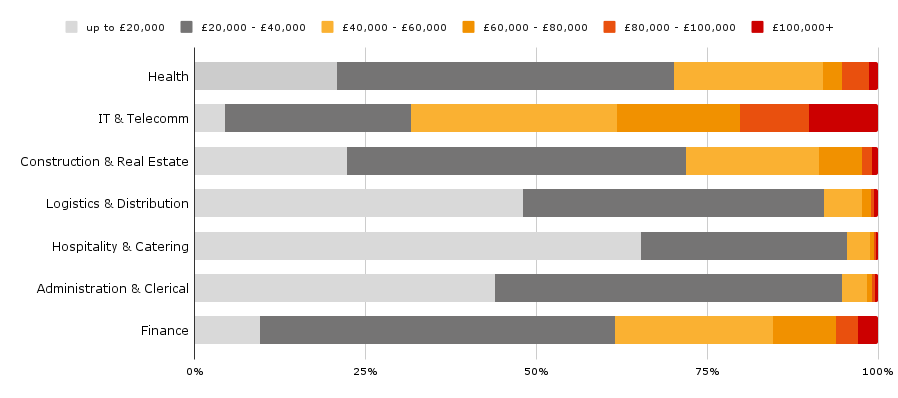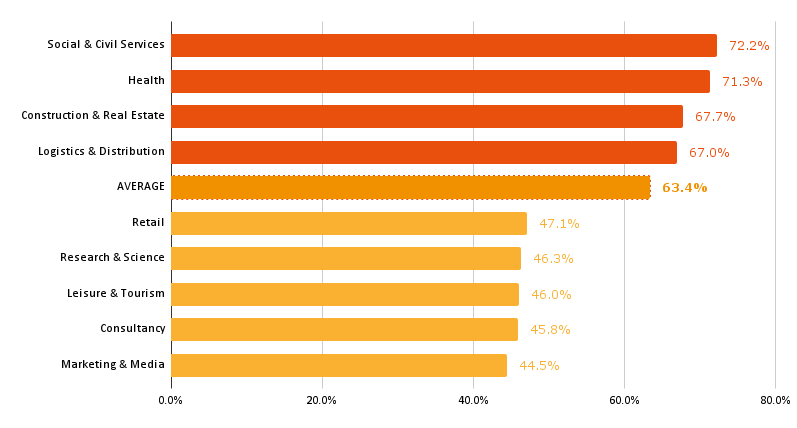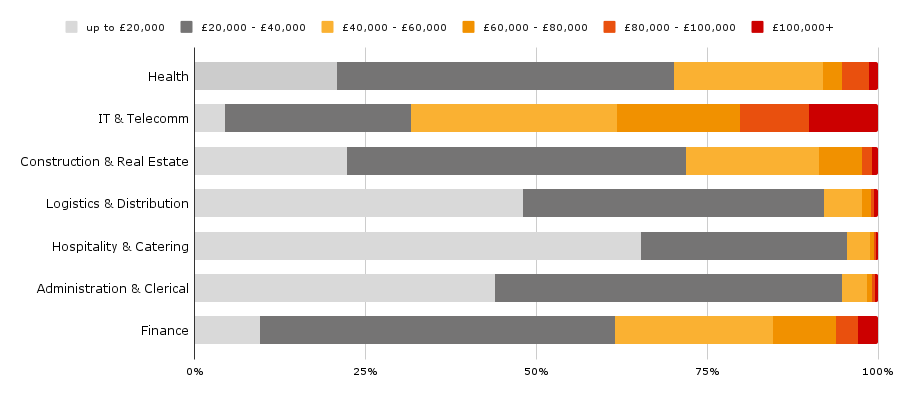

News from our business partners

Guest blog by Job Market Insights
On March 8, the UK government announced a pilot whereby participating employers will list salary ranges in their job adverts to tackle pay inequality. The overall picture of the UK labour market shows that, in 2021, only 62.5% of job ads contained salary information. The data comes from more than 8.6 million unique jobs analysed by Job Market Insights, which is able to extract salary information listed on all major job boards across the country.
This ratio has remained constant over the last few years (60.5% in 2020 and 63.8% in 2019). In the first quarter this year, 63.4% of unique jobs included a salary range, representing 54.5% of employers (companies and recruiters).
Education, Social & Civil Services, and Health were the job categories with the highest level of pay transparency (between 71 to 72%) in 2021. The ones with fewer adverts with salary information were Marketing & Media, Retail, Research & Science, Consultancy, and Leisure & Tourism (less than half).

Recruiters and direct employers can leverage salary information to fill positions faster and more efficiently, and at the same time adjust their salary range by predicting future trends even before they are reflected in official employment statistics.
When we take the whole market as a reference, 45.5% of all reported salaries in 2021 were in the range of £20,000 to £40,000, and 29.6% were below £20,000. Only 1.3% were above £100,000 and 1.5% between £80,000 and £100,000. Compared to the two previous years, there was no significant variation among salary bands.
When analysed by job category, IT & Telecomm was the one with the highest salaries, with 20% of positions offering more than £80,000 (10% >£100,000). Followed by Consultancy and Management jobs (17% >£80,000).
On the other side of the scale, Hospitality jobs offered the lowest wages, with 65% of the adverts listing salaries below £20,000. The rest of the job categories with below-average salaries include Retail (59%), Social & Civil Services (50%), Customer Service (50%), Leisure & Tourism (50%), and Logistics (48%). It is interesting to note that the majority of the hardest-to-fill positions in recent months fall precisely into the latter job categories.

Several countries are making moves to increase salary transparency by, among other measures, ensuring salary visibility to candidates before they apply. In the US, New York City recently passed a bill that requires employers to post the salary range for all job openings, as is already happening or being discussed in some American states.
The European Union is taking steps to approve measures that would require employers to provide the initial pay level or its range in the job vacancy ad.
However, the current situation in its European neighbours is a far cry from that in the UK. Job Market Insights collects labour market data from eight other countries in the region. In the case of Ireland, around a third of job adverts published in 2021 listed the salary or the salary band. In Germany, 9 million unique jobs were posted last year, similar to the UK, but only 3% had any specific salary information (vs. over 60% in the UK). In France, it was about 10% (with more than 8 million unique job ads last year). The situation was almost the same as in other major European economies like Italy (around 4%) and Spain (just over 10%).
Read the original blog from Job Market Insights.
Job Market Insights is a big data analytics tool that provides a 360º view of the labour market. It is a REC Business Partner—some REC members already use Job Market Insights and enjoy an exclusive discount to better analyse, compare and understand employment trends, identify who is hiring, track competitor behaviour and detect business opportunities with accurate, up-to-date information. Job Market Insights is part of Adevinta, a leading online classifieds specialist, operating digital marketplaces in 15 countries.
This is a guest blog contribution for the REC website. The views expressed by guest writers reflect the individual's personal opinions.
Job Market Insights is a big data analytics tool that provides a 360º view of the labour market. As REC members, you get:
• 5% discount on Job Market Insights license fees for all REC members.
• A free 2-week trial, which includes demo, training sessions and support
Share this article